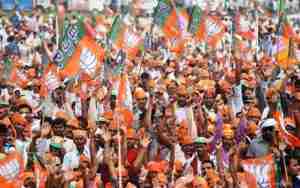1] Introduction
Judicial activism refers to the proactive role played by the judiciary in interpreting and applying the Constitution and laws in a manner that goes beyond the traditional boundaries of adjudication. It suggests judiciary getting involved itself in issues of governance, public policy, social justice etc.
The concept of judicial activism originated in the USA. In India, this doctrine was introduced in the mid-1970s by the efforts of justice V R Krishna and P N Bhagwati.
Judicial activism is often confused with the idea of judicial review. Judicial review (article 13) empowers the court to declare the laws which are inconsistent with the Constitution as void. Judicial activism, on the other hand, goes a step forward. In this, the judiciary may even force the other two organs of the government to discharge their constitutional duties. They can also participate in law-making policies. The aggravated version of judicial activism is called judicial overreach, which are the antithesis of judicial restraint– self-control exercised by the judiciary.
2] Constitutional Vision: Judiciary vs Parliament
The makers Indian Constitution envisioned a balance of power with Parliament as the supreme legislative body and the judiciary as the guardian of the Constitution.
Dr. B R Ambedkar was an ardent advocate of constitutionalism. He believed that the Parliament should be the engine for constitutional change as it is the representative of the people. But he also famously called article 32 (right to constitutional remedies) as “the very soul of the Constitution” as it empowered judiciary to counter majoritarian dictates. He favoured a degree of executive influence to maintain democratic accountability in judicial appointments.
Jawaharlal Nehru, on the other hand, emphasised that the parliament should be supreme in matters of social reform., and that courts should not act as a “third house of correction” in such matters. The first constitutional amendment and the introduction of the ninth schedule reflected his stance.
The text of the Constitution itself encodes the framers’ Intent to restraint judicial intervention in certain domains.
For example, article 122 and 212 bar courts from inquiring into proceedings of Parliament or state legislatures, preserving legislative autonomy.
The framers intentionally avoided the U.S. term “due process of law” in Article 21, opting for the phrase “procedure established by law,” to limit the judiciary’s ability to invalidate socio-economic legislation on subjective grounds.
Furthermore, the amendment procedure in Article 368 contained no substantive limits on Parliament’s power to amend the Constitution (until the basic structure doctrine was later formulated).
Constitutional experts, like Granville Austin, have described India’s system as one of “bounded parliamentary sovereignty.” He holds that the framers wanted the judiciary to police the constitutional boundaries, and not supplant the role of the executive or the legislatures.The assumption was that each branch would stick to their respective roles.
In the past few decades, this equilibrium has shifted with the expanding role of judiciary.
3] Evolution of Judicial Activism in India
Judicial Activism in India has emerged gradually and often in response to perceived governance failure. In the pre-1970s, the courts mainly played a passive role and focused on interpreting laws. In many cases, it acceded to the Parliament’s will.
The first major shift came with the landmark Keshavanand Bharti case (1973), where the supreme court limited Parliament’s power to amend constitution by creating the Basic Structure doctrine. Pratap Bhanu Mehta observes that this case exemplified the Court “creating its own powers” to preserve constitutional governance.
The Emergency period (1975-1977) witnessed the domination of the executive over the judiciary. The court also failed to defend civil liberties in the ADM Jabalpur case (1976). This caused the judiciary to undergo a profound change post-emergency. Legal scholars like Upendra Baxi believe that the post Emergency judicial activism emerged due to a sense of “institutional guilt” and a resolve to never be a bystander to state repression again.
This resolve culminated in the birth of Public Interest Litigation (PIL) in the late 1970s and 1980. The PIL revolution dramatically expanded access to justice by allowing individuals and organizations to approach courts on behalf of those who couldn’t do so themselves.
In 1980s, the Court actively intervened to protect bonded labourers, undertrial prisoners, and other disadvantaged groups. Article 21 (right to life) was broadened to include rights to live with dignity, livelihood, health, education, a clean environment, etc.
The next phase of judicial activism in India began in the 1990s and 2000s. During this time, the judiciary expanded into Governance matters. For example, the supreme court ordered pollution controls, closed industries (e.g., Delhi tanneries, Ganga cleanup), monitored corruption probes (e.g., Jain hawala case), mandated food distribution, prison reform, police reform etc.
Court’s intervention was primarily triggered by the collapse or paralysis of other institutions. Baxi defended the activism as “people’s judicature” necessary to advance social justice when the state fails.
On the other hand, critics called it judicial overreach. For example, the striking down of NJAC (2015) by the supreme court sparked severe backlash. The NJAC had been unanimously passed by Parliament and ratified by states, reflecting an overwhelming legislative consensus to replace the collegium (judges-appoint-judges) system with a more accountable mechanism. Thus, the Supreme Court’s decision to invalidate the NJAC was seen as a disregard to the ‘mandate of the people.’
4] Judicial Activism: Recent cases
The years 2023–2025 have witnessed several high-profile examples of judicial proactiveness in India, underlining both the judiciary’s continued role as a constitutional watchdog and the controversies around its far-reaching interventions.
A] Electoral Bonds Verdict (2024)
In a landmark decision delivered in February 2024, a five-judge bench of the Supreme Court struck down the Electoral Bond Scheme as unconstitutional. The scheme (introduced 2017) had allowed anonymous, unlimited donations to political parties via bank instruments, raising concerns about transparency and quid pro quo corruption.
Further, the judgment directed the State Bank of India to disclose the identities of past donors and stopped further issuance of bonds.
While the judgement was necessary, there are two major issues with it.
First of all, the timing of the judgement felt politically motivated. The verdict was given on even of 2024 general elections, when the ruling government was powerless to do anything about it – given the election sensitivities and also model code of conduct. The Court’s ruling led to intense political debates, with various media outlets linking donations events with political events. This disproportionately gave advantage to the opposition political parties.
Then there was also issue of state going back on its own word. While the various organs of state may have their rivalry, for people it represents a single entity – state. The bond scheme promised anonymity to donors when it was formulated. The courts overturned it. For people, it was state going back on its own word. Events like this undermine the legitimacy of state.
B] Governor and President Assent Judgment (2025)
In April 2025, responding to Tamil Nadu’s complaint, the Court laid timelines for Governors and the President to act on bills—citing constitutional accountability. It ruled that indefinite inaction is unconstitutional, indirectly ending the misuse of “pocket vetoes”. It even used Article 142 to deem certain pending bills as law.
While celebrated as a pro-federalism move, critics argued the judiciary rewrote Article 200 without formal amendment—raising separation-of-powers concerns.
C] Cash Scandal Involving High Court Judge
In March 2024, an accidental fire at the judge’s official bungalow led firefighters to stumble upon a huge cache of half-burnt currency notes hidden in a storeroom. The judiciary’s handling of this scandal became a litmus test of its transparency and accountability in dealing with corruption in the judiciary.
After a 10-day inquiry in early 2025, the panel held the misconduct serious enough to warrant removal of the judge. CJI wrote to the President of India and the Prime Minister recommending Justice Varma’s impeachment. The judge was simultaneously repatriated to his original HC (Allahabad) and effectively benched (no judicial work).
In terms of transparency, however, the process remained largely opaque. The proceedings of in-house judicial inquiries are not open to public or press, unlike court trials. This raised the perennial question: Can judges be objectively and transparently held accountable by themselves, or is an external oversight needed?
Notably, in January 2025, the Lokpal itself ruled on this question. While dismissing a complaint against the former CJI, the Lokpal held that Supreme Court judges (including the CJI) are not “public servants” under its jurisdiction. However, the Lokpal distinguished that High Court and subordinate judges might come under its remit.
In February 2025, a special bench of the Supreme Court, in suo motu mode, stayed the Lokpal’s decision asserting jurisdiction over High Court judges, calling it “very disturbing”. The case (still pending as of mid-2025) pitches the judiciary against the Lokpal in a tussle over “who will judge the judges.”
5] Implications for Governance
The rise of judicial activism in India carries profound implications for the functioning of democracy. On one hand, an activist judiciary can fill institutional vacuums, protect rights; on the other, it can create a new power imbalance by encroaching on the domain of elected bodies, raising questions about democratic legitimacy (and accountability).
Persistent activism by judiciary poses a risk of systemic imbalance. Legislative autonomy can be undermined if lawmakers feel the courts will anyway redraw policies. Executives might develop a tendency to punt hard problems to the courts instead of resolving them. This “judicialization of governance” can distort the intended collaborative functioning of democracy.
Judiciary has both strengthened and strained federalism. On one hand, the Supreme Court has been a referee ensuring fair play between Centre and States. For example, in the Governor Assent case, it enhanced state autonomy.
On the other hand, when the Supreme Court directly entertains issues of state policy (via PILs that affect states or by transferring cases to itself), it can bypass state institutions. For instance, it has centralised issues (like pollution) that override local governance discretion.
Legitimacy of state is perhaps the crux of the debate. Courts derive legitimacy not from popular vote but from constitutional role and public trust. But when they make broad policy pronouncements, their lack of electoral accountability becomes a concern.
Democratic accountability also suffers when too many decisions are made by a few unelected judges behind closed doors. Unlike politicians, judges cannot be voted out if people dislike their decrees. Public trust can be eroded if the Court is perceived to be imposing values not shared widely or if its actions produce suboptimal results.
6] The Way Forward
Pratap Bhanu Mehta remarks that “ the weakness of the political process provides fertile soil for judicial activism.” To revive the balance between the three branches of the government, it is vital to bring legislative and executive reform. Revitalising parliamentary debates and robust standing committees would reduce judicial intervention.
Also, strengthening alternative institutions, like CAG, CIC, Lokayuktas, and Parliamentary Committees can reduce reliance on judiciary. Courts should focus on rights enforcement, not day-to-day governance.
While the Constitution implicitly demarcates domains, it may be worthwhile for the three branches to have an open dialogue to define guiding principles of restraint. A mutual understanding – even if informal – can help reduce friction.
The higher judiciary itself could introspect and calibrate its activism. Former Chief Justice S.H. Kapadia once warned that the Court must respect the separation of powers and not run the government. For instance, the Supreme court can limit PILs to rights-based violations.
Judicial appointments is one of the most contentious issues between the executive and the judiciary. A revised NJAC 2.0, addressing earlier flaws (e.g., judicial primacy), could restore balance.
Parallelly, a credible judicial accountability framework is needed. The in-house procedure for misconduct is viewed as opaque and inadequate. Short of bringing judges under the full ambit of Lokpal (which the judiciary resists for independence reasons), a middle path could be establishing a National Judicial Oversight Committee by statute, comprising retired judges and perhaps a respected jurist or retired civil servant, to handle complaints against judges.
7] Conclusion
Judicial activism in India has safeguarded constitutional values, protected rights, and corrected executive overreach. But its expansion into governance raises important questions about democratic legitimacy and separation of powers.
As India matures as a democracy, the path forward lies in ensuring:
- Parliament legislates boldly but constitutionally
- Executive governs transparently and responsively
- Judiciary intervenes sparingly but decisively
This delicate balance—of accountability, restraint, and cooperation—must be restored for India’s constitutional democracy to remain vibrant and sustainable.















